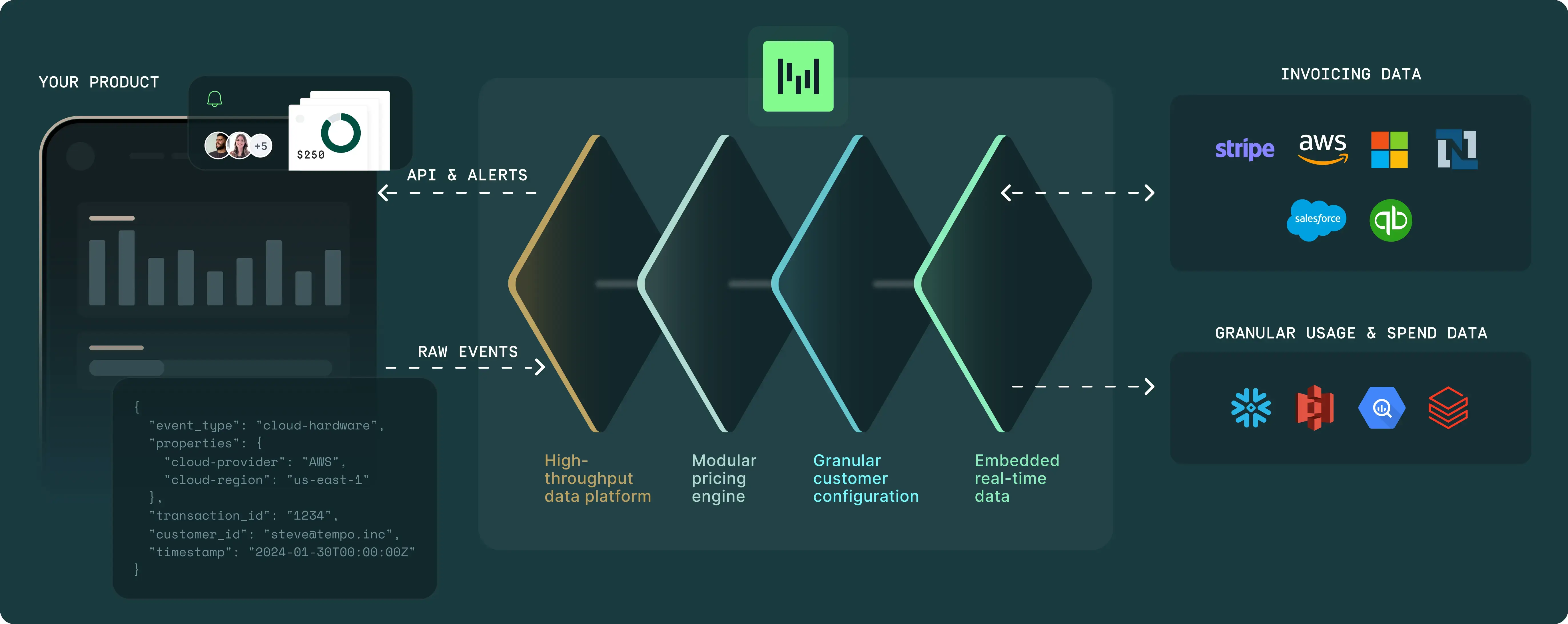Documentation
Metronome is the usage-based billing platform that helps you launch and scale products faster. Easily deploy your pricing today, iterate confidently tomorrow. As the single source of truth for your customer usage and spend data, Metronome enables teams to manage and update pricing, powers real-time billing experiences, and drives revenue workflows.

Key features
High throughput data platform
Metronome meters and stores all your raw revenue-related events to support both current and future pricing. The platform is built for accuracy and reliability at extreme scale.
Modular pricing engine
Deploy any SaaS pricing strategy using centralized rate cards, commits, and credit models as your core building blocks. Fully customize all pricing elements and contract terms to fit your business.
Granular customer configuration
Easily customize pricing with flexible discounts or overrides of standard rate cards. Schedule pricing updates to take effect instantly, in the future, or retroactively.
Embedded real-time data
Flow real-time usage and spend data into your product, data warehouse, and business systems, providing critical visibility to both internal teams and customers.
Explore our guides
Quickstart
Run through a standard Metronome integration, generating an invoice calculated from your rate card, billable metrics, and usage data.
Learn morePay-as-you-go
Implement a consumption-based pricing model where customers pay only in arrears for the products or features they use, instead of committing to a fixed subscription or long-term contract.
Learn moreEnterprise commit
Build a robust integration with first-class support for enterprise deal requirements, such as prepaid and postpaid commitments, negotiated discounts, one-time charges, and contract renewal terms.
Learn moreHow Metronome works
Explore Metronome's core components and learn how to combine them for customized customer billing.
Learn moreSee Metronome in action
Metronome helps companies accelerate their revenue by streamlining billing workflows and enabling teams to make pricing changes in minutes, not months.